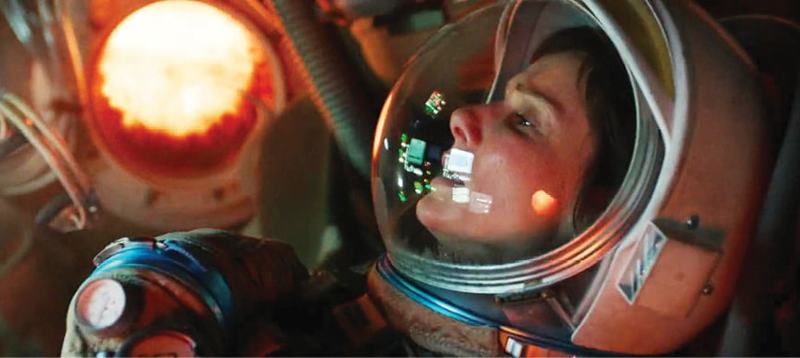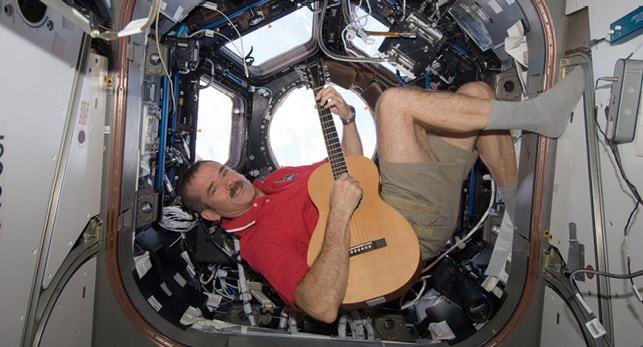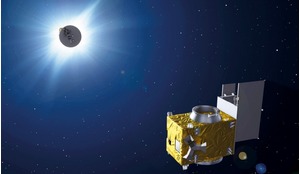The advancement of technology due to humanity’s desire to reach and understand the stars cannot be understated. Competition breeds innovation, which helps explain some of the great steps forward made in times of war: innovation breeds success. Space exploration has advanced knowledge, benefited from advancements in knowledge creation; has created new ideals to reach for, as well as advancing political ideology.
In space, we see an important form of power at play. The power of knowledge, and the power of technology and technological advances to create this knowledge. If we look to theories of international political economy, we begin to understand what this power is, where it comes from, and why it truly is central to space exploration, travel and activity.
While we might assume that power is gained, achieved, used and played with in terms of military and finance, holding structural hegemonic power requires more than brute force. To display hegemonic power also involves having the best ideas, the most inspirational technology and winning over the hearts and minds of the people.
 Gravity, the 2013 British-American science fiction film which stars Sandra Bullock and George Clooney as astronauts who are stranded in space after the destruction of their space shuttle, and their subsequent attempt to return to Earth.
Gravity, the 2013 British-American science fiction film which stars Sandra Bullock and George Clooney as astronauts who are stranded in space after the destruction of their space shuttle, and their subsequent attempt to return to Earth.
Space has been at the forefront of this and has demonstrated its worth through arts, culture, film, television, literature, music since the middle of the 20th century - and it looks unlikely to stop anytime soon.
So, what is power? In terms of space-going activities we can discuss power in several ways. According to NASA, the main engines propelling the Space Shuttle to Earth orbit generate a total of 37 million horse-power.
Alternatively, we can define power in terms of work/time, as an astro-physics equation allowing the calculation of precise information regarding space flight and propulsion. Power also has political synonyms of equal importance to the space sector; these relate to states, international relationships, public private partnerships and cultural development. However, as a political tool for analysis, power is not measurable through mathematical formulae, nor is it identifiable by its horsepower output.
And, how can we measure and discuss power in politics, in society - and in space? Theories abound and these provide resonant discussions to explain certain social, economic or political phenomena but we do not have a one size fits all answer: in political science we have no Newton.
Winning the ‘hearts and minds’ of the people is an incredibly important factor in the cultural imperialism that promotes social and political hegemony
In terms of international relations, we might discuss relational power - the power one has directly over another, or structural power - the power to structure how the world works. Susan Strange, a theorist based in the International Political Economy tradition, provides us with a useful tool-kit. She suggests that power is derived from three different sources - force, wealth and ideas: and further notes that it is held in four fundamental structures; security, finance, production and knowledge.
State power, exercised through military capacity and financial supremacy, is familiar to most. However, we must acknowledge two important ways in which this is a narrow way to look at power. First, while it is important to remember that the main actor in global affairs remains the state, alongside this, we have other actors within the liberal capitalist system, namely corporations, with an actor’s ability to influence political and global outcomes.
For all business conducted in outer space to become profitable: global power relations, and thus international relations theories must therefore be flexible enough to encourage non-state actor participation in the international arena.
As was the case with the high seas in years gone by, states require access to space for economic, social and security advancement and provision. Second, military and financial power do not necessarily help win the hearts and minds of the people: knowledge, ideas and powerful cultural capture contribute as much to global power relations as hard edged weaponry, cash and financial structures. There is an old saying in English: ‘knowledge is power’. And indeed, knowledge forms part of the international political economy’s view of hegemonic power.
But where do knowledge and space meet? I would argue they meet at several junctures:
- knowledge is required to go to space. This is scientific, technological, production enhancing knowledge, without which space exploration is impossible.
- the means by which knowledge is transferred and communicated is now largely space based: internet, television, radio, mobile phone and broadcasting is dependent on satellite communication.
- knowledge as dominant discourse is important to space - how do the public react to space, to what extent have states won over the hearts and minds of the people in regards to space? Public spending on space requires public support - politicians are accountable to the public at times of election, and although space may appear to be minor aspect of public policy, it can be costly.
- we should note that as a structural component of the international political economy, winning the ‘hearts and minds’ of the people is an incredibly important factor in the cultural imperialism that promotes social and political hegemony. From John Donne to David Bowie, popular European artists have used outer-space as inspiration; while Star-Trek, Star Wars and other Hollywood sci-fi franchises owe outer space an enormous cultural debt.
Innovation and inspiration promote technological advance and, in terms of military interventions, are precipitated by war. The Cold War was a time of vastly increased military spending and accelerated technological advancement. From the closing scenes of the Second World War, the USA and the USSR fought a cold and strategic battle to take the V2 blueprints and create an intercontinental missile capable of cross continent destruction. Wernher von Braun in the USA and Sergei Korolev in the Soviet Union strove to develop weapons capable of mass destruction, and, simultaneously, rockets capable of reaching where man had never been.
 British astronaut Tim Peake ‘runs’ the 2016 London Marathon whilst onboard the ISS
British astronaut Tim Peake ‘runs’ the 2016 London Marathon whilst onboard the ISS
In terms of knowledge development and ideas, the Cold War battle for rocket technology peaked in 1957 with the launch of Sputnik. Despite American confidence in its knowledge production and superior liberal capitalist ideas, the Soviet Union achieved the first satellite launch.
Militarily, Sputnik itself did very little. However, socially, politically and in terms of power relations Sputnik was a game changer. The success of Sputnik left the US, its politicians and citizens questioning the utility of not only their scientific and military expertise but also questioning the underlying, fundamental ideas behind their liberal capitalist democracy.
We must not underestimate contributions made to the arts and to our cultural history by space exploration and space travel
While the USA and the Soviet Union fought for state-based supremacy both on land and in space, and achieved new heights in technological development, corporations, film, music and cultural iconography adopted space as a watchword for forward-looking modernity and equally for a new found insecurity.
As an enabler of cultural thinking, space has had an impact on our cultural heritage like no other subject matter. The profusion of science fiction films released during the 1960s illustrates the impact that space exploration had on the arts, while David Bowie, always the zeitgeist, recorded Space Oddity one month before Apollo 11 landed on the Moon: Bowie’s early embrace of science fiction was noted by Billboard as a sign of the times.
We must not underestimate the contribution made to the arts and to our cultural history by space exploration and space travel. Technological advancement, accelerated by the 20th century’s love affair with worldwide warfare, will mean that it is remembered as the century of space rather than the century of destruction. And if the 20th century is remembered as such, it comes with all the music, arts, films, television franchises and capitalist shtick required to accompany any number of avid fans, children and fanatic space enthusiasts through future space progressions.
Although some might argue that the Cold War space race is now over (and some might not), the competitive nature of state-based innovation in space technology is alive and well. Most space activity in contemporary society is based around the design, launch, maintenance and running of satellites in Earth orbit. Indeed, the importance of satellites has increased extensively since Sputnik made its name circumnavigating Earth.
Today the military, global transport networks, the global financial markets and the world trading system all rely on global positioning technology and satellite communication to function. Of note, although many satellite launch companies are privately owned, or of public-private partnership status, the majority of launch facilities remain state-based, or intergovernmental in nature.
Therefore, as competition increases for capital and private investment, it could be argued that recent innovation in state-based space activity is driven by the private sector’s need for efficient, safe and timely launch facilities. Innovation and technological advancement are being powered by the need to provide the best service to the private sector and to find high tech solutions to new problems as they arise.
Although perfecting launch facilities for use by private corporations may not seem the most romantic of notions, space activity and exploration continues to light up the public imagination. Social media allows us to see the life of an astronaut as never before, and the International Space Station (ISS) allows us to imagine living a life outside Earth’s atmosphere.
 Canadian Space Agency astronaut Chris Hadfield strums his guitar in the ISS Cupola in 2012. Hadfield, a long-time member of an astronaut band called Max Q, re-popularised David Bowie’s space musings for another new generation whilst in orbit.
Canadian Space Agency astronaut Chris Hadfield strums his guitar in the ISS Cupola in 2012. Hadfield, a long-time member of an astronaut band called Max Q, re-popularised David Bowie’s space musings for another new generation whilst in orbit.
Canadian astronaut Chris Hadfield, while on the ISS, gave us an insight into his life, and re-popularised David Bowie’s space musings for another new generation. British astronaut Tim Peake ignited the imagination of the British population by completing a space-walk, running the London Marathon from the ISS and talking directly to school children.
While human beings look to the skies, and ask what is there, space will not lose popularity. Its vast unknown appeals to humanity’s deepest desires. And, while it retains this mystique and cultural popularity, space will not lose its corporate or state support.
Space will not lose popularity - its vast unknown appeals to humanity’s deepest desires
What we may want to take note of now, however, is the extent to which Earth-bound technology has entered the realm of necessity. Populations demand internet connection as a ‘Human Right’; our powers of free expression and communication require the ability to communicate instantaneously around the globe; and interference to satellite communication structures would thus be considered a breach of fundamental rights.
Such is the importance of this new level of structural communication for the military, the global market, transport, trade, human development and human rights, that the interference or cessation of such services is considered a tool of warfare.
And this puts satellites and space technology at great risk of security breach. While this seemed unlikely best-selling film fodder, Alfonso Cuaron’s 2013 space debris thriller Gravity demonstrated the fact that space will always sell.
Moreover, it highlighted the need to examine this issue further, to create the technologies required to decommission satellites safely and successfully, to remove debris from space and to create policy in support.
The days of space innovation are not over - they have entered a new phase, perhaps a new pragmatic phase, where new problems receive new solutions, where films address the exciting issues of the day. Only when we are no longer interested in space, or in the technologies we have based in space, will innovation cease, and will popular culture stop drawing on space activity for inspiration. Thankfully that day seems a long way off.














